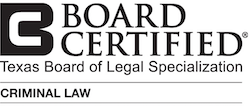The Top 20 Myths Of Breath, Blood, And Urine Tests
By Leonard Stamm
When the experts disagree, who are we to believe? As Learned Hand observed:
The whole object of the expert is to tell the jury, not facts . . . but general truths derived from his specialized experience. But how can the jury judge between two statements each founded upon an experience confessedly foreign in kind to their own? It is just because they are incompetent for such a task that the expert is necessary at all.
Learned Hand, Historical and Practical Considerations Regarding Expert Testimony, 15 Harv. L. Rev. 40, 53 (1901).
This article explores disagreements among the experts — the myths commonly employed by courts, police, and prosecutors, and often accepted by defense lawyers in drunk driving cases, and the published scientific articles debunking those myths. In some cases, there is honest debate about the validity of the state's methods and theories. In other cases, the state's experts' conclusions are translated improperly by police and prosecutors, to the detriment of defendants. The point of this article is not to comprehensively discuss every point of view, but to quote some of the published scientific articles that challenge the status quo.
Most of these articles cannot be found in a law library or on Westlaw or Lexis. One major resource for exploring scientific literature related to drunk driving is www.pubmed.com. While this is an excellent resource for reading abstracts of the articles, unless one subscribes to the relevant scientific journals, it is often necessary to do research "the old fashioned way" and copy these articles at a medical library. There are also innumerable scientific texts covering our subject, many of which were excellent resources in writing this article. Among them, Medical-Legal Aspects of Alcohol, (James G. Garriott ed., 4th ed. 2004), contains articles by the leading experts in the field, including Dr. A.W. Jones and Dr. Kurt Dubowski. A legal treatise that discusses some of the scientific literature in depth is Edward F. Fitzgerald, Intoxication Test Evidence (2nd. ed.).
Most of the articles discussed here have been "peer reviewed." Peer review "increases the likelihood that substantive flaws in methodology will be detected." Daubert v. Merrell Dow Pharms., Inc., 509 U.S. 579, 593-94 (1993). It refers to a process of editing. Kenneth K. Altman, The Myth of "Passing Peer Review," in Ethics and Policy in Scientific Publication 257, 262 (Council of Biology Editors, Inc. 1990). Scientific publication is not immune to falsification of data, plagiarism, conflict of interest, and politics. Id. Most commentators agree that the quality of published scientific articles is enhanced by peer review. However, how much is anyone's guess and differs from journal to journal.
Certainly the author's background and past and present affiliations may be relevant to an evaluation of him or her. Many of the published researchers in the field of forensic toxicology related to alcohol testing are presently or were formerly employed by, or affiliated with, state alcohol testing programs. While this does not necessarily create a conflict of interest, it may indicate a bias that is relevant to an assessment of an article's credibility or an author's testimony in court.
Finally, it is important to recognize that many scientific articles rely on the language of statistics in reaching their conclusions. Statistical concepts are often not well translated into legal concepts, like the concept of proof beyond a reasonable doubt. This allows the state to employ a mathematical slight of hand, using a preponderance standard to secure admission of test results and then arguing that they have satisfied the higher standard of proof beyond a reasonable doubt.
It is with these considerations in mind that we turn now to the top 20 myths in breath, blood, and urine testing.
Myth #1: Breath Means Alveolar Air
The alcohol breath test is the most commonly used form of alcohol testing evidence in drunk driving prosecutions. Many articles praise the breath test as a highly accurate and reliable means of testing the amount of alcohol in the alveolar air of a person at the time of the test, assuming certain safeguards are met. E.g., Kurt M. Dubowski, Absorption, Distribution and Elimination of Alcohol: Highway Safety Aspects, 10 J. Stud. Alcohol Suppl. 98 (1985).
Forensic toxicologists have long assumed that a properly obtained breath alcohol sample contains alveolar air. However, in most statutes, both "blood" and "breath" are undefined. Blood can be venous, arterial, capillary, or from any other part of the body. Breath can be upper, lower respiratory, or mouth. "Blood" and "breath" were left undefined because state scientists did not want to legislate requirements that would be difficult to implement in practice and difficult for the government to prove. Significantly, although breath statutes rest on the belief that the exchange of alcohol from the blood to the breath occurs in the alveoli, they do not require a sample of exclusively alveolar or deep lung air.
It is claimed that the failure to obtain a solely alveolar sample does not prejudice the defendant.
It should be noted that alveolar air is not required. Inasmuch as in an otherwise correctly performed breath test, failure to obtain air only of alveolar composition gives a nearly proportionately lower result and is without prejudice to the defendant, the question of the specimen being entirely alveolar in origin need not arise.
Morton F. Mason, & Kurt M. Dubowski, Breath as a Specimen for Analysis for Ethanol and Other Low-Molecular-Weight Alcohols, Medical-Legal Aspects of Alcohol 177, 178 (James C. Garriott ed., 4th ed. 2003).
This is an example of scientists and lawyers using language in different ways. Although the scientists may have assumed that alveolar air is preferred for an accurate test, the law does not say that. Instead, because "breath" is undefined, the only logical interpretation of the statute is that "breath" means the whole breath. A dictionary definition of breath is "air inhaled and exhaled in breathing." Merriam-Webster's Collegiate Dictionary, (11th ed. 2004). If the legal level is determined by reference to the entire breath, alveolar air is only a portion of that breath. If alveolar air contains a higher concentration of alcohol than the whole breath, then a tested sample of alveolar air will give a false high reading of the whole breath required by the statute.
Recent articles by Dr. Michael Hlastala of the University of Washington show that alveolar air does not accurately relate to the blood level because the exchange of alcohol from blood to the breath in the lung occurs in the upper airway, not the alveoli.
Calculations by Anderson show that, whereas gases with blood-air partition coefficients (l) of <1 exchange entirely in the alveoli, gases with higher solubility (l of > 10) also exchange within the airways. Gases with l of >400 exchange entirely in the pulmonary airways, not within the alveoli. Exhaled BrAC originates entirely from the airway mucus and tissue (perfused by the systemic bronchial circulation).
Michael P. Hlastala, Invited Editorial on "The Alcohol Breath Test,"93 Journal of Applied Physiology 405, 405 (2002).
He also notes a measured blood-breath ratio that is lower than the one used by breath test instruments.
Jones measured the equilibrium by using an in vitro equilibration chamber with controlled temperature. In that study, the partition between blood and air at 37ºC was measured at 1,756 ± 8 (mean ± SE) at 37ºC. Thus there is a 20% discrepancy between the directly measured partition ratio (1,756) and the blood-breath ratio (2,100) (2,100/1,756 ~ 1.2). This difference can be explained by an average loss of alcohol to the airway mucosa in the average ABT of ~ 20%.
Id. at 405.
Hlastala also challenges the notion that breath test instruments will necessarily obtain an accurate reading of the alveolar air.
[T]he notion that a flat slope will always be obtained when expiratory flow rate approaches zero and that this represents alveolar air is incorrect. . . . At the end of exhalation, BrAC levels off when flow decreases, irrespective of the exhaled volume. The flat slope does not indicate the presence of air at alveolar concentration because BrAC is an increasing function with exhaled breath volume.
Michael P. Hlastala, The Alcohol Breath Test — A Review, 84 (2) Journal of Applied Physiology 401, 402-03 (1998).
He thus concludes that breath test instruments currently in use tend to favor individuals with larger lung size, because those individuals may stop breathing into the machine earlier, allowing the machine to be fooled into sampling a nonalveolar portion of the breath that is lower in alcohol concentration.
A consequence of continuing to use the old model is that subjects with larger lung volume may have a lower BrAC than a subject with a small lung volume because these subjects do not need to exhale as great a fraction of their vital capacity as subjects with smaller lung volume to fulfill the minimum volume exhalation required before stopping exhalation (usually ~1.5 liters). A person with smaller lung volume must breathe farther into the exhaled breath, resulting in a greater BrAC-to-BAC ratio.
Michael P. Hlastala., Invited Editorial on "The Alcohol Breath Test," 93 Journal of Applied Physiology 405, 406 (2002).
This revolutionary proposition, that the alcohol exchange between the blood and air occurs in the upper airways, is what Dr. Hlastala calls his new paradigm. It should be noted that his field of expertise is lung physiology, not toxicology.
Myth #2: Breath Test — DUI Suspects Are Post-Absorptive
At least one court opinion boldly states, "Because any delay in the administration of a chemical test ordinarily inures to the benefit of the accused, an accused suffers no prejudice." Willis v. State, 488 A.2d 171, 180 (Md. 1985). This statement assumes that the person was post-absorptive at the time of driving and testing. It ain't necessarily so.
Studies by Kurt M. Dubowski indicate varying ranges of elapsed time from the end of alcohol intake to peak blood alcohol concentration of 14 to 138 minutes, 9 to 114 minutes, and 12 to 166 minutes. Kurt M. Dubowski, Absorption, Distribution and Elimination of Alcohol:Highway Safety Aspects, 10 J. Stud. Alcohol Suppl. 98-105 (July 1985). He concludes:
It is often impossible to determine whether the postabsorptive state has been reached at any given time. Those factors make it impossible or infeasible to convert the alcohol concentration of breath or urine to the simultaneous blood alcohol concentration with forensically acceptable certainty, especially under per se or absolute alcohol concentration laws.
Id. at 105.
Myth #3: Breath Test — Absorptive Phase Test Is Okay
A number of articles report a huge disparity between measurements of breath alcohol and venal blood alcohol content when the person being tested is still absorbing the alcohol into his or her body, or is in the absorptive phase of alcohol metabolism. One study showed that the breath result can be as much as 100 percent higher than the blood level during the absorptive phase. E. Martin, W. Moll, P. Schmid, L. Dettli, The Pharmacokinetics of Alcohol in Human Breath, Venous and Arterial Blood After Oral Ingestion, 26 (5) Eur. J. Clin. Pharmacol., 619 (1984).
Other studies also report unacceptably high differences between breath and blood results obtained during the absorptive phase. E.g., G. Simpson, Accuracy and Precision of Breath Alcohol Measurements for Subjects in the Absorptive State, 33(6) Clin. Chem. 753 (June, 1987); G. Simpson, Corrections to a Report, 33(11) Clin Chem 2130 (Nov. 1987) (erratum to the June article); G. Simpson, Do Breath Tests Really Underestimate Blood Alcohol Concentration? 13(2) Journal of Analytical Toxicology, 120 (Mar.-Apr. 1989). Dr. Simpson's conclusions speak for themselves.
Simultaneous measurements of breath alcohol concentration (BrAC) and venous blood alcohol concentration (VBAC) show that actual VBAC can be overestimated by more than 100% for a significant amount of time after drinking stops. The maximum error for four individual subjects is +230%, +190%, +60%, and +30%. The magnitude of these errors indicates that results from quantitative evidential breath alcohol analyzers are far less accurate for the absorptive state than the postabsorptive state, but the specifications for accuracy and precision given by manufacturers of these instruments do not reflect this.
G. Simpson, Accuracy and Precision of Alcohol Measurements for Subjects in the Absorptive State, 33 (6) Clin. Chem. 753, 753 (1987). He continues:
The results also indicate that there is a significant likelihood that subjects will be in the absorptive state when tested under field conditions. I conclude that estimates of BAC based on BrAC measurements are not reliable in the absorptive state and that the uncertainty associated with such estimates should be accounted for, particularly when the results are used in connection with law enforcement.
Id. at 753.
Myth #4: Breath Test — 2100:1 Favors Your Client
State scientists claim that the 2100:1 blood-breath partition ratio favors defendants because the true mean is closer to 2300: 1.
Breath alcohol analysis is by far the most commonly employed form of chemical testing in traffic law enforcement. Hence the true blood:breath ratio for alcohol, originally used to calibrate alcohol analyzers to indicate the supposedly corresponding blood alcohol concentration, has been a subject of much scientific investigation and debate for about 50 years. It is evident from considerations of quantitative human biology that a single ratio or conversion factor will not apply to all persons (Mason and Dubowski, 1974, 1976).
Kurt M. Dubowski, Absorption, Distribution and Elimination of Alcohol: Highway Safety Aspects, 10 J. Stud. Alcohol Suppl. 98, 102 (1985).
Nevertheless, for half of that period, there was general acceptance of 2100:1 as the partition ratio of alcohol between blood and alveolar breath, as a population mean (Borkenstein et al. 1972; Harger et at., 1950; National Safety Council, 1953). Quantitative evidential breath alcohol analyzers are still currently factory-calibrated in grams of alcohol per 210 L of breath. Some official guidelines incorporate this calibration (National Highway Traffic Safety Administration, 1984), thus in effect retaining a 2100:1 blood alcohol: breath concentration ratio for those jurisdictions statutorily requiring the reporting of evidentiary alcohol concentrations in terms of blood.
Id. at 101-102.
Later studies on larger subject groups, with more sophisticated chemical analyses of blood and breath for alcohol and more extensive data treatment, indicated that the mean alcohol partition factor between blood and breath is very close to 2300:1 (Dubowski, 1975; Dubowski and O'Neill, 1979; Jones, 1976; Jones et al., 1975). However, significant variations from this population mean exist during active alcohol absorption and in some individuals even in the post-absorptive phase. The typical biological variability of human alcohol pharmacokinetic parameters is well illustrated by the data from studies of Dubowski and O'Neill (1979). These are summarized in Table 3, for the ratio of alcohol concentrations in whole blood and end-expiratory breath in healthy adult men in the fully postabsorptive phase.
Id. at 102.
These experimentally determined ratios have a Gaussian distribution. Hence a postabsorptive blood alcohol: breath alcohol concentration ratio range of 1797:1 to 2763:1 can be estimated for 95% and 1555:1 to 3005:1 for 99.7% of such a population. Id. at 102.
Transposing Dr. Dubowski's figures onto a normal or Gaussian2 distribution chart makes it easier to conceptualize his findings (See Figure below).
While 2300:1 is slightly greater than the mean of 2280: 1, 2100:1 or higher accounts for less than 80 percent of the total population. Thus over 20 percent of persons tested in this study would have a false high reading at 2100:1. In order to achieve a confidence level of 99.7 percent, the partition ratio of 1555:1 would have to be used.
Myth #5: Breath Test — Reporting BAC As BrAC Cures Blood: Breath Ratio Problems
Again, Dr. Simpson needs no interpretation.
The enactment of direct breath-alcohol statutes, however, has not eliminated the need to correct for the experimental error stemming from the conversion of breath- into blood-alcohol concentration via multiplication of the former by a constant blood/breath ratio. In fact the enactment of such statutes has . . . resulted in the legislation of incorrect science.
Dominick A. Labianca & G. Simpson, Medicolegal Alcohol Determination: Variability of the Blood- to Breath-Alcohol Ratio and Its Effect on Reported Breath Alcohol Concentrations, 33 Eur. J. Clin. Chem. Clin. Biochem. 919, 919 (1995).
A statute that establishes a specific breath-alcohol concentration limit in this way does not solve the problem of blood/breath ratio variability that Dubowski and Jones sought to eliminate. It simply ignores that variability, which is the essence of its scientific flaw.
Id. at 919-20.
Moreover, since the statute operates under the assumption that any driving-while-intoxicated suspect who undergoes a breath test is characterized by a 2100:1 blood/breath ratio, it is also legally flawed; if the statute does 'greatly enhance the investigation and disposition of [driving while intoxicated] charges'; as claimed by Dubowski, it does so by inappropriately relieving the prosecution of its burden to establish that the defendant has a blood/breath ratio of 2100:1 at the time of the breath test.
Id. at 920- 921.
[T]he only approach at present is to use population data for blood/breath ratios corresponding to appropriate confidence limits. As recently stated by Rainey . . . mean ± 2.58 SD (99% confidence limits) is the appropriate confidence interval for conversions of body-fluid alcohol concentrations when a standard of 'beyond a reasonable doubt' is required.
Id. at 921.
Applying the 2.58 standard deviation concept for 99 percent reliability, using Dr. Dubowski's figures, a reported BrAC (breath alcohol concentration) of .10 would instead be reported as .0789.3
Myth #6: Breath Test — Temperature Does Not Need To Be Measured
In all but a small number of jurisdictions, breath temperatures are not accounted for by the breath testing machines in use. Breath test devices are calibrated and checked with solutions heated to 34º C. If the defendant's breath is higher than 34º C, the test reading will be falsely elevated.
As temperatures rise, the concentration of ethanol in the air phase increases and therefore the blood/air partition coefficient decreases. The average temperature coefficient of solubility for dilute solutions of ethanol in water and blood is 6.5% per 1º C for the temperature range of 20-40º C.
A.W. Jones., Effects of Temperature and Humidity of Inhaled Air on the Concentration of Ethanol in a Man's Exhaled Breath, 63 Clinical Science 441, 441 (1982), citing, Kurt M. Dubowski, Breath-alcohol Simulators: Scientific Basis and Actual Performance, 3 Journal of Analytical Toxicology 177 (1979).
These results show clearly that mild hyperthermia in humans does . . . significantly distort the BrAC decay curve to an extent which would cause serious inaccuracy for prediction of BAC. The magnitude of this distorting effect of core temperature is too large (up to 23% with mild hyperthermia) to be ignored in breath-testing procedures. . . . [S]uch error in the case of hyperthermia increases the likelihood of a suspect being unjustly convicted.
Glyn R. Fox & John S. Hayward, Effect of Hyperthermia on Breath Alcohol Analysis, 34 (4) Journal of Forensic Sciences 836, 839 (1989).
It is not only the defendant with a fever that is discriminated against.
Almost all (93%, 81%) of the collected breath samples acquired on the Alcotest 7110 MK IIIs had breath temperatures above 34º C. Our results show a breath temperature range of 32.4-36.2º C with a mean of 34.9º C. This is in agreement with the earlier work of Harger and Forney, Schoknecht and Stock who found mean breath temperatures of 35.1º C and 35º C, respectively.
Dale A. Carpenter & James M. Buttram, Breath Temperature: An Alabama Perspective, 9 IACT Newsletter 16, 16 (July, 1998). If Alabama defendants are indicative of defendants generally, then between 81 percent and 93 percent of breath tests nationwide are falsely elevated on the basis of temperature alone.
Myth #7: Breath Test — Breathing Pattern Is Not Important
Breathing pattern is another factor where different operator techniques can lead to disparate results.
With breath holding (30 seconds) before expiration, the concentration of ethanol increased by 15.7 ± 2.24 percent (mean ± SE) and the temperature of breath rose by 0.6 ± 0.09º C. . . . Keeping the mouth closed for 5 minutes (shallow breathing) increased expired ethanol concentration by 7.3 ± 1.2 per cent and the breath temperature rose by 0.7 ± 0.14º C. After a slow (20 second) exhalation expired ethanol increased by 2.0 ± 0.71 percent but breath temperatures remained unchanged from control tests.
A.W. Jones, How Breathing Technique Can Influence the Results of Breath-Alcohol Analysis, 22 (4) Med. Sci. Law 275, 275 (1982).
Myth #8: Breath Test — Belching Cannot Affect A Breath Test
Breath test operators often let arresting officers untrained in obtaining a breath sample observe the defendant for a portion of the 15 or 20 minute deprivation period. The problem is that the arresting officers may only be looking for foreign object intake, if they are really observing at all.
Contamination of a delivered breath specimen can result from residual alcoholic beverage in the mouth, by the presence of residual vomitus containing alcohol in the mouth, by the regurgitation of stomach contents, or by eructation of gas having a significant component of alcohol.
Morton F. Mason & Kurt M. Dubowski, Breath as a Specimen for Analysis for Ethanol and Other Low-Molecular-Weight Alcohols, Medical-Legal Aspects of Alcohol 177, 180 (James C. Garriott ed., 4th ed. 2003). "Eructation" is defined as "an instance of belching." Merriam-Webster's Collegiate Dictionary, (11th ed. 2004).
Alcohol in the oral cavity arising from recent alcohol ingestion, regurgitation of stomach contents containing alcohol or by eructation of gas containing sufficient amounts of alcohol can contaminate the breath sample and cause falsely elevated results.
Patrick Harding, Methods for Breath Analysis, Medical-Legal Aspects of Alcohol 185, 186 (James C. Garriott ed., 4th ed. 2003).
The pioneer work by Bogen indicated that hiccuping, burping, and belching might present a problem in connection with breath-alcohol analysis. Only very limited investigations of this problem have been made, but these indicate that the risk of elevating breath-alcohol readings is greatest shortly after the end of drinking as might be expected because the concentration of alcohol in the stomach is then at its highest.
Alan Wayne Jones & Barry K. Logan, DUI Defenses, Drug Abuse Handbook 1006, 1024 (Steven B. Karch ed., 1988).
Myth #9: Breath Test — GERD Cannot Affect The Breath Test
It was reported that approximately 7% of US adults experience daily heartburn so GERD probably represents a common disorder, even among those who might submit to a breath-alcohol test. About 90 min after the end of drinking, when the BAC-profile enters the post-absorptive phase, the concentration of alcohol in the stomach should be roughly the same as that in the peripheral venous blood. Accordingly, if gastric reflux occurred 90 min or more after the end of drinking it should not compromise the results of an evidential breath-alcohol test because the concentration of alcohol in the gastric fluid at this time is relatively low and probably similar to that of mucous secretions in the mouth and upper-airway.
Stergios Kechagias, Kjell-Ake Jonsson, Thomas Franzen, Lars Andersson & Alan Wayne Jones, Reliability of Breath-Alcohol Analysis in Individuals with Gastroesophageal Reflux Disease, 44 (4) J. Forensic Sci. 814, 814 (Jul. 1999).
Of course, this quote implies that the converse may be true. If the gastric reflux occurs during absorption, which according to studies by Dr. Dubowski cited above, can take over 2 1/2 hours, then it could affect the breath reading.
Obviously, the risk of gastric reflux increasing the result of a breath-alcohol test will be greatest shortly after the end of drinking when the concentration of alcohol in the stomach is at its highest. [T]he mandatory 15 min observation period still remains an important element of the evidential breath-alcohol test protocol because this can help to rebut allegations that gastric reflux occurred.
Myth #10: Breath Test — Dentures Cannot Cause A False High Reading
Although many scientists contend that dentures do not trap alcohol that can contribute to a false high reading, a leading study on this remains controversial.
Data was excluded from one female subject (#23) who had particularly poor fitting dentures and was unable to avoid swallowing during the dosing period.
Patrick Harding, et. al., The Effect of Dentures and Denture Adhesives on Mouth Alcohol Retention, 37 Journal of Forensic Science 999, 1002 (July 1992).
Under these stringent experimental conditions, positive apparent BrACs occurring more than 15 min after alcohol expectoration were observed in 9 of the 24 subjects. Two subjects showed trace BrACs beyond 20 min.
Id. at 1006.
One of the individuals in another study had a breath sample of 70ug/100mL (Å .15) and a blood sample showed .05.
Dental examination of the defendant showed that he had extensive work carried out, including three bridges. A possible explanation, therefore, for these anomalous results is that the excessive breath-alcohol concentrations might be due to mouth alcohol retained in the bridges or periodontal spaces. . . .
D.J.H. Trafford & H.L.J. Makin, Breath Alcohol Concentration May Not Always Reflect the Concentration of Alcohol in Blood, 18 (4) Journal of Analytical Toxicology 225, 225 (Jul.-Aug. 1994).
Unless the law is concerned with convicting the many, while ignoring the few, this case demonstrates the desirability of offering all defendants the chance to have their breath-alcohol concentrations checked by analysis of blood or urine.
Id. at 228.
Myth #11: Breath Test — Slope Detectors Protect Against Mouth Alcohol Influencing A Result
Our experience with the Intoxilyzer 5000 has shown that its residual mouth alcohol flagging program (that is, the slope detector) is not entirely reliable under the extreme experimental conditions employed in the present study. In this experiment we were able to obtain apparent BrACs as high as 0.18 g/210 L in spite of this feature. The slope detector was never intended to be a substitute for residual mouth alcohol detection and prevention protocols such as a pretest alcohol deprivation period and requiring agreement within 0.02 g/210 L for successive BrACs taken 2 to 10 min apart.
Patrick Harding, et. al., The Effect of Dentures and Denture Adhesives on Mouth Alcohol Retention, 37 Journal of Forensic Science 999, 1006 (July 1992). Translation: according to this author, slope detectors, designed to detect mouth alcohol, don't work.
Myth #12: Breath Test — Hematocrit Is Irrelevant To The Result
So you ask, what is hematocrit?
The hematocrit represents the fraction of whole blood composed of red cells and is correlated with the aqueous content of blood. The higher the hematocrit, the lower the concentration of water in blood, and vice versa. The average hematocrit for normal, healthy males is 47%, with a range of 40-54%; for females the average is 42% and the range is 36-47%. Since ethanol dissolves almost entirely in the aqueous component of blood, two individuals with identical actual BAC's but with different hematocrits would be expected to produce different Breathalyzer results. The person with the higher hematocrit, and therefore lower blood-water content, would necessarily be characterized by a higher concentration of ethanol in the aqueous component of his/her blood and consequently, by a higher Breathalyzer reading. Given that the Breathalyzer uses only one partition ratio, Smith and Payne et al. have predicted that the normal variation in hematocrit can produce errors in breath test results in the 10 to 14% range.
Dominick A. Labianca, The Chemical Basis of the Breathalyzer, 67 (3) Journal of Chemical Education 259, 261 (March 1990).
Myth #13: Breath Test — Breath Tests Are Specific For Ethanol
Infra-red
A number of studies found substances that can interfere with an infra-red testing device that were not picked up by the instrument.
We conclude that the Intoxilyzer Model 4011 AS may exhibit significant interference when used for subjects previously exposed to lacquer or lacquer thinner fumes.
William Giguiere, David Lewis, Randall C. Baselt, Randall Chang, Lacquer fumes and the Intoxilyzer, 12 Journal of Analytical Toxicology 168, 168 (May-June 1988).
Toluene alone can account for somewhere between 0.048 and 0.058 g/210L of the ostensible ethanol reading without causing the interference mechanism to trigger (Table 2), and this value would be below most legal threshold. However, if the signal resulting from toluene is augmented by the presence of genuine ethanol, the readout could exceed legal limits without activating the interference mechanism.
Jonathan P. Caldwell & Nick D. Kim, The Response of the Intoxilyzer 5000 to Five Potential Interfering Substances, 42 (6) Journal of Forensic Sciences 1080, 1084 (1997).
The results of this study clearly indicate that all five substances tested for potential interference with the Intoxilyzer 5000 will interfere to some degree. Even so, the performance of this instrument is significantly better than that of the earlier model Intoxilyzer 4011AS-A. Four of the five compounds (toluene, the two xylenes, and isopropanol) are registered by this version of the Intoxilyzer as interferences by the instrument at given points in their concentration and one (methanol) is not. From the point of view of where this interference mechanism is triggered, the compounds can be ranked in terms of their probability (if present) of causing an undetected false-positive reading for ethanol in this order: methanol > toluene > the xylene > isopropanol.
Id. at 1086.
Giguiere, Lewis, and Baselt examined a 52-year-old male cabinet maker with a 20-year history of work-related exposure to lacquers and paint thinners. At 3:36 p.m he received a test reading of 0.369 percent digital, 0.312 percent printout (w/v) on an Intoxilyzer 5000, with the printout indicating "interferent subtracted." At 3:48 p.m., 0.273 percent digital, 0.245 percent on the printout, also indicating "interferent subtracted." A blood sample drawn at 3:40 p.m. indicated ethanol 0.0 percent, acetone 0.025 percent (w/v), and toluene 11 mg/L.
Although the highest apparent blood alcohol concentration (0.31 % w/v) given by the Intoxilyzer for this subject is 282 times that of the actual blood toluene concentration, because toluene exhibits a blood:breath ratio that is 116 to 300 times less than that of alcohol, and because it demonstrates significant infrared absorption at the 3.50 Å 0.06 micron wavelength used by the Intoxilyzer 5000, we consider it likely that toluene caused the instrumental interference observed in this case.
Mary Anne Edwards, William Giguiere, David Lewis & Randall C. Baselt, Intoxilyzer Interference by Solvents, 10 (3) Journal of Analytical Toxicology 125, 125 (May-June 1986).
Diethyl ether vapor may substantially interfere with breath alcohol analysis by instruments based on infrared absorption at 9.5 um.
C. M. Bell, S. J. Gutowski, Diethyl Ether Interference with Infrared Breath Analysis, 16 Journal of Analytical Toxicology 166, 166 (1992) (Draeger Alcotest 7110).
. . . IR analysis for breath-alcohol at 9.5 um . . . would not provide a foolproof solution. Common volatile organic compounds other than ethanol, which occur for example, in solvents, perfumes, and food, also contain carbon-oxygen functionality and exhibit IR absorption bands that overlap this wavelength. Included among these are the following: other alcohols, esters, . . .and ethers . . .
Dominick A. Labianca, How Specific for Ethanol is Breath-Alcohol Analysis Based on Absorption of IR Radiation at 9.5 um?, 16 Journal of Analytical Toxicology 404, 405 (Nov.-Dec. 1992).
Fuel Cell
The Alcolmeter device makes use of an electrochemical detector for the determination of ethanol. The alcohol present in a measured volume of breath is oxidized at a platinum electrode surface to generate an electric potential which can be registered. The detector is not specific for ethanol. It gives a response to methanol, n-propanol, isopropanol, and acetaldehyde but is insensitive to acetone.
A.W. Jones, Evaluation of Breath-Alcohol Instruments III. Controlled Field Trial with Alcolmeter Pocket Model, 28 Forensic Science International 147, 148 (1985). This is consistent with a study published on the Intoximeter Web site.
Myth #14: Breath Test —Truncating To Two Digits Favors The Defendant
In many, if not most jurisdictions, two readings are taken and the lowest three-digit reading is truncated, leaving two digits as the reported reading. The government argues this favors the defendant and removes uncertainty in the test reading. Dr. Dubowski argues the third digit is irrelevant because the instrument is not capable of accurately reporting to three digits.
Figure 8 illustrates the uniform distribution of the third digits of field BrACs in g/210L. Gullberg also reported an essentially uniform distribution of third digits in field forensic breath alcohol testing. In truncating to two digits from three digits, the omitted third digits follow a uniform distribution. Third digits are discrete random variables with an equal probability of being 0, 1_.9. An unknown third digit is as likely to be 9 as 0. Truncating BrAC measurements in g/210L to two decimal places does not introduce bias other than the intended deletion of the third digit.
Kurt M. Dubowski & Natalie A. Essary, Measurement of Low Breath-Alcohol Concentrations: Laboratory Studies and Field Experience, 23 Journal of Analytical Toxicology 386, 394 (October 1999), citing, R.G. Gullberg, Distribution of the Third Digit in Breath Alcohol Analysis, 36 Journal of Forensic Science 976 (1991).
Dr. Jones takes a different approach, noting that truncating unevenly favors those who have a higher third digit.
In some jurisdictions rules and regulations for evidential breath-alcohol testing mandate that the lowest of the two independent breath-tests is used for prosecution. Also the third decimal is frequently truncated so that 0.109 g/210 L becomes 0.10 g/210 L. However, these safeguards do not help the person who by chance might have the same BrAC result in the two independent breath-tests or when the third decimal might have been zero.
A.W. Jones, Medicolegal Alcohol Determinations — Blood — or Breath-Alcohol Concentration?, 12 Forensic Science Review 23, 42 (Jan. 2000).
Myth #15: The Alcohol Tested Is Alcohol The Defendant Drank
Alcohol Swab Is Okay
A recognized source of physical contamination is the use of alcohol containing swabs to disinfect the area of specimen collection in the living patient. This method of specimen contamination is well documented in the literature (Heise, 1959; Taberner, 1989; Goldfinger and Schaber, 1982) with appropriate admonitions against using alcohol swabs for this purpose.
William H. Anderson, Collection and Storage of Specimens for Alcohol Analysis, Medical-Legal Aspects of Alcohol 237, 239 (James C. Garriott ed., 4th ed. 2003).
Endogenous Alcohol
If for some reason large quantities of ethanol are synthesized in the gastro-intestinal tract and overwhelm the capacity of the alcohol-metabolizing enzymes in the liver, then much higher concentrations of EE should appear in the peripheral venous blood. This is exactly what was described in a group of Japanese subjects who were suffering from various disorders of the gut. Some had previously complained of experiencing feelings of drunkenness even without consumption of alcohol. This condition seemed to appear after the subjects had eaten a carbohydrate-rich meal, such as rice. This study from Japan was difficult to fault because ethanol was identified in the blood, urine, and breath with the aid of a reliable gas chromatographic method for quantitative analysis.
Alan W. Jones & Barry K. Logan, DUI Defenses, Drug Abuse Handbook 1006, 1016 (Steven B. Karch ed., 1988).
The term used to describe this abnormal production of EE was 'autobrewery syndrome' and to our knowledge this has only been observed in Japanese subjects. It is widely known that the activity of alcohol metabolizing enzymes, especially aldehyde dehydrogenase, is different in Oriental populations compared with Caucasians, which might render Japanese and other Asians less able to clear ethanol from the portal blood. Other requirements before 'autobrewery syndrome' should be seriously considered as contributing to a person's BAC include genetic predisposition (Oriental origin), a past history of gastrointestinal ailments, documented medical treatment for the problem, low tolerance to alcohol, and reports of fatigue and drunkenness after eating meals.
Id. at 106.
Candida Albicans
In this experiment Proteus vulgaris and a-streptocci produced relatively little ethanol, and this production was eliminated or reduced to undetetectable levels by flouride. However, Candida albicans produced a much greater amount of ethanol, and this production was not at all inhibited by flouride.
Philip Blume & David J. Lakatua The Effect of Microbial Contamination of the Blood Sample on the Determination of Ethanol Levels in Serum, 60 Am. J. Clin. Path. 700, 701 (Nov. 1973).
Glendening and Waugh cite studies indicating the usefulness of fluoride in preserving specimens of blood from which ethanol determinations are to be made. Blackmore and Pleuckhalm and Ballard, reviewing the literature and presenting the result of their own extensive studies, point out the effect of microbial contamination on the production of ethanol in specimens of blood. They both suggest the use of sodium fluoride at a concentration of 1% for the preservation of blood specimens. While this is a worthwhile precaution, it appears that care should be taken to assure the sterility of the specimens nonetheless.
Id.; but see, A.W. Jones, L. Hylen, E. Svensson & A. Helander, Storage of Specimens at +4ºC or Addition of Sodium Fluoride (1%) Prevents Formation of Ethanol in Urine Inoculated with Candida Albicans, 23 Journal of Analytical Toxicology 333 (1999).
Myth #16: Blood Test —Enzyme Tests Are Reliable Enough To Quantify Alcohol
There are important differences between gas chromatographic and enzymatic procedures, which have an impact on this case. Gas chromatography (GC) is the preferred method because of its higher selectivity for ethanol, which allows positive identification by comparison of retention time with known standards. Mass spectral analysis would definitely prove the presence of ethanol. Enzymatic assays are less specific than GC for the analysis of ethanol. For example, both n-propanol and isopropanol are good substrates for ADH. Certain metabolic disturbances such as lactic acidosis create problems when automated enzymatic assays are used, which may lead to false positive test results.
B.K. Logan & A.W. Jones, Endogenous Ethanol Production in a Child with Short Gut Syndrome, 36 (3) Journal of Pediatric Gastroenterology 419, 419-20 (March 2003).
Indeed, the risk of hyperlactacidemia in short-gut syndrome was mentioned by Dahshan and Donovan, who found no measurable d-lactate in their patient. They failed, however, to report l-lactate, pyruvate, acetaldehyde, or other endogenous metabolites, all which measurements are important to the assurance that EE is truly elevated in their patient.
Id. at 420.
In the forensic laboratory, biochemical methods are not usually used for determining blood alcohol due to their lack of total specificity. Isopropyl alcohol and butyl alcohol interfere in the reaction. For forensic purposes, enzyme methods must be confirmed by an alternate technique. (Garriott, 1983).
Richard F. Shaw, Methods for Fluid Analysis, Medical-Legal Aspects of Alcohol 213, 217 (James C. Garriott ed., 4th ed. 2003).
The development of enzymatic assays based on the catalysis of ethanol to acetaldehyde and on the correlation of the rate of conversion of coenzyme NAD to NADH with ethanol concentration, as well as the assays' availability in kit form for use on automated instruments, has simplified the task of ethanol determination. These assays, as exemplified by the Syva, Abbott, and Roche enzymatic assays are rapid, sensitive, and cost-effective. However, high serum-lactate and LDH concentrations appear to interfere in some of these assays, resulting in false-positive ethanol values.
Jeffrey S. Nine, Michael Moraca, Mohamed A. Virji & Kalipatnapu N. Rao, Serum-ethanol Determination: Comparison of Lactate and Lactate Dehydrogenase Interference in Three Enzymatic Assays, 19(3) Journal Analytical Toxicology 192, 194 (May-Jun 1995).
The authors' conclusion is misleading to law enforcement agencies, attorneys, and even some pathologists because the average individual found driving under the influence or even an intoxicated person with traumatic injury does not match the pathology or the LDH and lactate concentrations described in this article. We would like to caution the forensic community that such a conclusion does not apply to situations in which an injured driver has received lactated Ringer's solution intravenously prior to having his blood taken for a blood alcohol test.
Charles Winek & Wagdy Wahba, A Response to "Serum-ethanol Determination: Comparison of Lactate and Lactate Dehydrogenase Interference in Three Enzymatic Assays," 20 Journal Analytical Toxicology 211, 211 (May-Jun 1996).
Our study showed the effect that abnormally high concentrations of lactate dehydrogenase (LDH) and lactate could have on one specific analytical method, which was then in use for the determination of serum/plasma ethanol concentrations. . . . The conclusions drawn in our paper applied to the cases in the report. The mechanism of interference in the assay was investigated in the laboratory to obtain an understanding of the biochemical basis for the falsely elevated ethanol concentrations at which the effect was observed; we suggested possible approaches to minimize or eliminate the interference. . . .The effect on Ringer's lactate was not investigated.
Jeffrey S. Nine, Michael Moraca, Mohamed A. Virji & Kalipatnapu N. Rao, The Authors Reply to, A Response to "Serum-ethanol Determination: Comparison of Lactate and Lactate Dehydrogenase Interference in Three Enzymatic Assays," 20 Journal of Analytical Toxicology 211, 211 (May-June 1996).
Myth #17: A Urine Test Can Reliably Measure Alcohol
There is massive documentation that the blood alcohol concentration cannot be established sufficiently reliably for forensic purposes from the alcohol concentration of a pooled bladder urine specimen because of the extensive variability of the blood:urine ratio of alcohol.
Kurt M. Dubowski, Absorption, Distribution and Elimination of Alcohol: Highway Safety Aspects, 10 J. Stud. Alcohol Suppl. 98, 102 (1985).
The overall average urine ethanol to blood ethanol ratio was 1.57:1 with a range of 0.07 to 21.0:1. The actual value of the ratio is unimportant. The wide range however, indicates the high probability of a large error being introduced into the calculation of a blood ethanol value from a urine ethanol concentration when using an average value for the ratio of urine to blood ethanol concentration. . . . Based on the data presented, the unreliability of using a urine ethanol concentration to predict a blood ethanol concentration cannot be questioned.
Charles L. Winek, Kathy L. Murphy, & Tracy A. Winek, The Unreliability of Using a Urine Ethanol Concentration to Predict a Blood Ethanol Concentration, 25 Forensic Science International 277, 280 (1984).
Myth #18: Extrapolation Backwards Is Accepted In The Scientific Community
Among the major reasons for the infeasibility of retrograde extrapolation, three stand out:
(1) lack of knowledge, usually, about the timing of the alcohol concentration peak and absorption-post-absorption status;
(2) ignorance about the mathematical characteristics (e.g. linear, pseudolinear, exponential) and the mean rate of change of the individual's blood or breath elimination curve; and
(3) unpredictable irregularities of the curve, especially short term fluctuations from the best-fit trend line of the blood or breath alcohol curve.
Kurt M. Dubowski, Absorption, Distribution and Elimination of Alcohol: Highway Safety Aspects, 10 J. Stud. Alcohol Suppl. 98, 103 (1985).
Extrapolation of a later alcohol test result to the time of the alleged offense is always of uncertain validity and therefore forensically unacceptable.
Id. at 106.
Myth #19: The Test Result Is Traceable To NIST
When simulators are used for control tests . . . at least two variables controlling the control target value need to be checked and properly validated: the ethanol concentration of the aqueous simulator solution and the simulator temperature at which the alcohol equilibration occurs. The former is a laboratory task in which the ethanol standards used should be traceable to National Standards and Technology (NIST) SRM 1828. The latter must necessarily be performed at the test site at the time of the control test; it should be done by thermometry using a device with calibration traceable to a NIST certified thermometer, such as NIST SRM 934.
Kurt M. Dubowski, Quality Assurance in Breath-Alcohol Analysis, 18 Journal of Analytical Toxicology 306, 310 (Oct. 1994).
It is advisable to check all prepared standards versus a certified reference standard available from the National Institute of Standards & Technology (NIST SRM 1828) or College of American Pathologists (CAP Certified Alcohol Standard Solutions). . . Each new set of standards should be verified against the standards in current use as well as the certified reference material.
Barbara J. Basteyns & Graham R. Jones, Quality Assurance, Medicolegal Aspects of Alcohol 229, 232 (James C. Garriott, 4th ed. 2003).
Merely having an instrument or artifact calibrated at NIST is not enough to make the measurement result traceable to reference standards developed and maintained by NIST. To establish traceability to such reference standards there must be an unbroken chain of comparison and each provided measurement must be accompanied by a statement of uncertainty. The measurement system by which values are transferred must be clearly understood and under control. The dates and details of each link in the chain must also be provided.
State v. Jagla, slip. op. at 6-7 (King County District Court, Washington) (June 17, 2003)(emphasis in original), quoting from, http: //ts.nist.gov/ts/htdocs/230 /233/calibrations/Policies/policy.htm.
We find that in order to be admissible under WAC 448_13_040, _035, and RCW 46.61.502, the thermometer in the breath test must be tested against a thermometer traceable to standards maintained by NIST. To be traceable, the uncertainties must be measured and recorded at each level. Given the posture of the cases before us, we do not reach whether substantial compliance would be sufficient. As the State has not established that the uncertainties had been measured and recorded, it has not met its foundational burden, and therefore the trial courts did not err in excluding the tests.
City of Seattle v. Clark-Munoz, 93 P.2d 141, 146 (Wa. 2004) (en banc).
Myth #20: The Test Result Is Based On Science — Not Secrets
11.9 Retention of Records
Records should be retained as long as practical, but for at least 5 years. Records should include a copy of the report, request and custody forms, work sheets, laboratory data, quality control and proficiency testing records.
SOFT/AAFS Laboratory Guidelines (2002).
Instrument output, laboratory worksheets and reports, internal and external proficiency testing results should be retained for as long as the results of the analysis may be required in court, which could be for many years.
Barbara J. Basteyns & Graham R. Jones, Quality Assurance, Medical-Legal Aspects of Alcohol 229, 233-34 (James C. Garriott, 4th ed. 2003).
There are a number of articles written and guidelines published about the need to follow minimum standards of quality control and assurance in scientific testing in order to provide minimum levels of assurance about the reliability and accuracy of test results. Frederic Whitehurst, a former expert in explosives at the FBI laboratory, and lawyer, who achieved prominence in the late 1990s for his disclosures of incompetence and fraud in that laboratory, has written an article detailing the minimum requirements for quality control and quality assurance in a scientific laboratory. He lists ten requirements for types of records that should be kept by the laboratory, and should be requested by and provided to defense counsel in a criminal case. F. Whitehurst, Forensic Crime Labs: Scrutinizing Results, Audits & Accreditation, The Champion 6 (April & May 2004).
In the field of toxicology, Dr. Dubowski has written an article titled, Quality Assurance in Breath Alcohol Testing, 18 J. Analytical Tox., 306 (1994). The abstract of his article states:
Evidential breath-alcohol testing requires an adequate quality assurance (QA) program to safeguard the testing process and validate its results. A comprehensive QA program covers (a) test subject preparation and participation; (b) the analysis process; (c) test result reporting and records; (d) proficiency testing, inspections, and evaluations; and (e) facilities and personnel aspects. Particularly important are the following necessary scientific safeguards as components of quality control: (a) a pretest deprivation-observation period of at least 15 minutes; (b) blank tests immediately preceding each breath-collection step; (c) analysis of at least duplicate breath specimens; and (d) a control test accompanying every subject test.
Id. at 306. See also, Cole v. State, 378 Md. 42, 835 A.2d 600 (2003)(defendant was entitled to discovery of testing laboratory's standard operating procedures, including quality assurance manual, calibration record for gas chromatograph/mass spectrometer (GCMS) used by chemist to test the substance, and discovery of the chemist's own proficiency testing records).
Has anyone from the defense side yet seen and evaluated the algorithms and logarithms used in the breath test computer programs, the software, the computer programs, or the testing done on the equipment? History has shown that defendants can never take for granted what government scientists claim is good science.
Conclusion
As defense lawyers, it is our duty to challenge government science, especially when there are other scientists in the field who criticize the status quo. In the interest of protecting the public from drunk drivers, have legislatures, too, readily blinded themselves to shoddy science? Have courts been able to convict the innocent by failing to properly account for uncertainty in science? It seems certain. Many scientists do recognize these problems.
While the percentage of overestimates and underestimates of actual BAC can give some indication of the reliability of breath analysis, the most important piece of information for legal purposes is the amount of error or uncertainty expected in an individual's BAC result. In a legal situation, the question is whether or not a particular defendant had a BAC in excess of some limit, not what percentage of people in general have actual BAC overestimated or underestimated.
G. Simpson, Incorrect Overestimates of Blood Alcohol Concentration from Breath Test Results, 14 (4) Journal of Analytical Toxicology 263, 264 (1990).
A more acceptable way would be to make a subtraction from the mean analytical result with this deduction being derived from statistical considerations of variability as a function of alcohol concentration . . . . Note that here a 99.9% confidence limit is appropriate in keeping with a 'beyond a reasonable doubt' standard in criminal cases.
Alan W. Jones, Medicolegal Alcohol Determinations — Blood — or Breath-Alcohol Concentration?, 12 Forensic Science Review 23, 42 (Jan. 2000); see also, Schlup v. Delo, 513 U.S. 298, 325 (1995).
Indeed, concern about the injustice that results from the conviction of an innocent person has long been at the core of our criminal justice system. That concern is reflected, for example, in the 'fundamental value determination of our society that it is far worse to convict an innocent man than to let a guilty man go free.' In re Winship, 397 U.S. 358, 372, 90 S.Ct. 1068, 1077, 25 L.Ed.2d 368 (1970) (Harlan, J., concurring). See also T. Starkie, Evidence 756 (1824) ('The maxim of the law is ... that it is better that ninety-nine ... offenders should escape, than that one innocent man should be condemned').
These concepts seem to get lost in court where test results are deemed relevant under a preponderance standard and then converted to proof beyond a reasonable doubt by per se laws. It is critical that judges and juries be educated as to this slight of hand practiced by the courts. When facing expert testimony expressed in measures of uncertainty defined by standard deviations from a mean or by a probability, we have to question whether the scientific level of uncertainty expressed by the expert and accepted by the court comports with the legal level of certainty that is required to satisfy due process.
It is our duty to educate legislators, judges, juries, prosecutors, police, other defense lawyers, our clients, and the public, so that in the end courts will not convict based on questionable science.






















